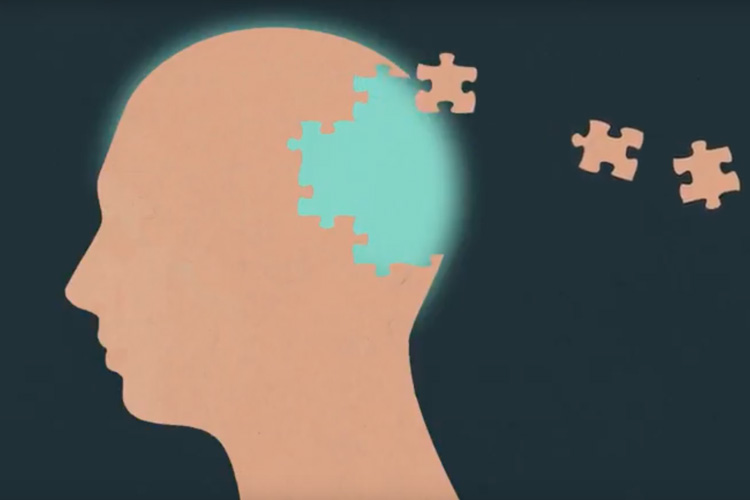New structure of tau protein, a key player in Alzheimer’s disease
Cryo-EM provides detailed information on the normal interaction between tau protein and the microtubule and how alterations can make tau fall off and contribute to brain degeneration

May 14, 2018
Alzheimer’s disease develops when proteins in the brain form abnormal tangles, and a key player is tau protein, which normally stabilizes the cytoskeleton of neurons.
Though the structure of tau tangles is known, scientists have understood less about how normal tau interacts with the structural components of the cytoskeleton, the so-called microtubules.
A team led by Eva Nogales, a UC Berkeley professor of molecular and cell biology, senior faculty scientist at Berkeley Lab and Howard Hughes Medical Institute investigator, has now determined the detailed structure of the tau protein when bound to microtubules.
The model provides insight into how tau interacts with microtubules under normal conditions, and what makes it dissociate to form tau tangles in Alzheimer’s disease and related neurological diseases, referred to as “tauopathies.”
Microtubules play an important role in maintaining cell shape, enabling some forms of locomotion, facilitating intracellular transport and segregating chromosomes during cell division. Each microtubule is a hollow cylinder composed of 13 parallel protofilaments of tubulin protein.
Tau helps keep these microtubules stable and organizes them into bundles of tubulin. Mutations in the tau protein or modifications such as hyperphosphorylation reduce tau’s affinity for microtubules and are thought to contribute to the formation of tau tangles.
The team used cryo-electron microscopy to image native full-length adult tau bound to microtubules with an overall resolution of 4.1 angstroms (Å). They showed that tau attaches longitudinally along the crest of the tubulin filaments, a finding consistent with a previous low-resolution cryo-EM study.
“Our structure shows how tau’s main contact with the microtubule surface is at the interface between tubulin subunits, serving as a ‘stapler’ to promote the association between tubulin subunits and explaining how tau promotes microtubule stability,” said Elizabeth Kellogg, a postdoctoral researcher in Nogales’ UC Berkeley lab and co-first author on the paper presenting the work, which was published May 10 in the journal Science. “The structure also explains how tau phosphorylation leads to its dissociation from microtubules.”